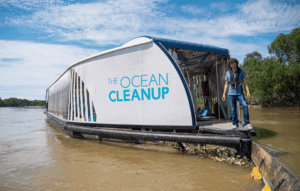When a train carrying hazardous materials derailed in Palestine, Ohio, the aftermath sent shockwaves through the local community and beyond. What unfolded was not just a localized disaster but a sobering reminder of the fragility of our infrastructure and the potential risks of relying on and, in turn, transporting toxic substances. Here, we break down the events, the environmental implications, and the lessons we can’t afford to ignore.
The Initial Incident: A Community Shaken
In early 2023, a freight train operated by Norfolk Southern derailed in Palestine, Ohio, a small town with a population of less than 5,000. The train was carrying hazardous chemicals, including vinyl chloride, a highly flammable carcinogenic compound used in the production of PVC plastic.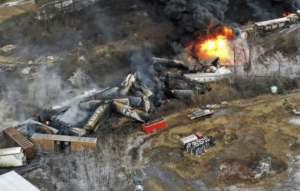
The derailment caused a massive chemical spill, and emergency responders were forced to make a difficult decision: conduct a controlled burn to prevent an explosion. While the burn successfully mitigated the immediate risk of a catastrophic blast, it released an untold amount of toxic fumes, including dioxins, into the air and surrounding environment.
The incident drew national attention, sparking debates about rail safety standards and the environmental risks of transporting these types of hazardous materials. News outlets reported that this was one of several similar incidents in recent years, raising concerns about systemic issues within the freight industry.
The Environmental Impact
The chemical spill and subsequent controlled burn created a toxic fallout with far-reaching consequences:
- Air Contamination: Plumes of black smoke blanketed the skies above Palestine, raising concerns about respiratory health. Residents reported headaches, dizziness, and difficulty breathing within hours of the incident.
- Water Pollution: Chemicals seeped into local waterways, contaminating the town’s drinking water and posing a deadly risk to aquatic life. Reports surfaced of most if not all fish dying in nearby streams, a clear example of the spill’s devastating impact on ecosystems. There were also concerns about the contamination spreading downstream to larger water systems, as water pollution tends to do.
- Soil Contamination: Toxic residues from the air and water accumulated in the soil, posing long-term risks to agriculture and wildlife in the area. Farmers voiced concerns about the viability of their crops and the safety of their livestock. Experts warned that cleaning up the soil could take years and require significant resources.
Health Concerns: A Growing Crisis
The health risks associated with the incident are honestly terrifying. Vinyl chloride exposure has been linked to a range of acute and chronic conditions, including:
- Respiratory Issues: Prolonged exposure can cause irritation to the eyes, nose, and throat, as well as long-term lung damage.
- Cancer Risks: Vinyl chloride is classified as a Group 1 carcinogen by the World Health Organization. Prolonged exposure can increase the risk of liver, brain, and lung cancers.
- Neurological Effects: Symptoms such as dizziness, confusion, and memory loss are associated with high levels of exposure.
The release of dioxins, a byproduct of the controlled burn, adds another layer of concern. Dioxins are persistent environmental pollutants with severe consequences; they accumulate in the food chain and are linked to hormonal imbalances, immune system suppression, and reproductive issues. Residents in Palestine are now grappling with the long-term implications of the disaster, not to mention the mental and emotional toll of anxiety around the potential health impacts and the need for regular medical check-ups.
Government and Corporate Accountability
In the wake of the disaster, questions have been raised about the role of Norfolk Southern and the effectiveness of government oversight:
- Corporate Responsibility: Norfolk Southern has faced criticism for inadequate safety protocols and its delayed response to the incident. Lawsuits have been filed against the company, accusing it of negligence. Investigative reports revealed that the company’s profits had surged in recent years, yet spending on safety measures had not kept pace.
- Regulatory Gaps: The incident has spotlighted deficiencies in rail safety regulations. Hazardous materials are frequently transported through residential areas, yet safety measures often lag behind modern technological capabilities. Critics argue that more stringent federal regulations and enforcement are necessary to prevent such disasters.
- Community Engagement: Local residents expressed frustration over the lack of timely information and clear guidance from authorities. Many felt left to fend for themselves during the crisis. Public hearings have since been held, but trust between the community and both corporate and governmental entities remains strained.
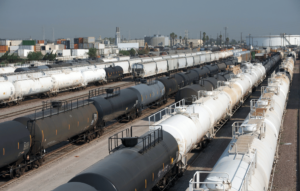
The Broader Implications
This disaster is not an isolated incident but part of a larger pattern of environmental hazards linked to aging infrastructure and lax oversight. The Palestine train derailment highlights several big issues:
- Infrastructure Vulnerabilities: Much of the nation’s rail system relies on aging tracks and outdated safety technology, increasing the likelihood of accidents. Industry experts have called for widespread modernization efforts, including the implementation of advanced monitoring systems.
- Transporting Hazardous Materials: The event raises questions about the safety of transporting highly toxic substances through densely populated or environmentally sensitive areas. Balancing economic efficiency with public
 safety is an ongoing challenge that needs to be addressed in earnest.
safety is an ongoing challenge that needs to be addressed in earnest. - Climate Change and Disaster Response: Extreme weather events exacerbated by climate change can increase the likelihood of such accidents. Communities need more robust disaster preparedness plans, including better emergency response infrastructure and training.
- Economic Costs: Beyond environmental and health impacts, incidents like this carry significant economic consequences. Clean-up costs, lawsuits, and loss of public trust can exceed many millions of dollars, further straining local and national resources.
Community Resilience and Grassroots Action
Despite the tragedy, the people of Palestine have demonstrated remarkable resilience. Grassroots organizations have sprung into action to address immediate needs and push for long-term solutions:
- Advocacy for Clean-Up Efforts: Residents are demanding comprehensive clean-up initiatives to restore air, water, and soil quality. These efforts include
 independent testing to ensure accountability and transparency.
independent testing to ensure accountability and transparency. - Calls for Policy Reform: Local activists are working with environmental groups to lobby for stricter regulations on transporting hazardous materials. Public petitions and demonstrations have brought national attention to their cause.
- Health Monitoring Programs: Community leaders are advocating for long-term health monitoring to track the effects of chemical exposure and ensure early intervention for affected individuals. Mobile health clinics and partnerships with universities are being explored as potential solutions.
- Education and Awareness: Grassroots campaigns are also focused on educating residents about their rights and how to protect themselves in the event of future incidents.
Lessons for the Future
The Palestine, Ohio train derailment offers several key lessons:
- Invest in Modern Infrastructure: Upgrading rail systems with advanced safety technologies can reduce the risk of accidents. Automated braking systems, better sensors, and track maintenance programs are essential.
- Strengthen Regulations: Stricter rules for transporting hazardous materials
 and better oversight are essential to prevent future disasters. This includes revisiting zoning laws and ensuring safe routes for hazardous cargo.
and better oversight are essential to prevent future disasters. This includes revisiting zoning laws and ensuring safe routes for hazardous cargo. - Empower Communities: Ensuring transparency and timely communication during emergencies can build trust and enhance public safety. Local governments should prioritize clear communication strategies and emergency training.
- Focus on Environmental Health: The incident underscores the need to prioritize environmental health in both disaster response and long-term policy planning. Integrating environmental risk assessments into infrastructure projects is crucial.
- Encourage Corporate Accountability: Companies like Norfolk Southern and others must be held accountable for safety violations and incentivized to invest in preventive measures. Stronger penalties for non-compliance can serve as a deterrent.
Closing Thoughts
The toxic fallout in Palestine, Ohio, is a grim reminder of the interconnectedness of human and environmental health. While the immediate crisis has subsided, the long-term impacts on the community and the environment are uncertain at best. By learning from this disaster and advocating for practical systemic change, we can work towards a safer, healthier future – one where tragedies like this become a relic of the past that we took heed of and learned from.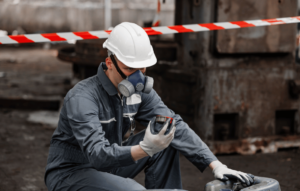
The resilience of the Palestine community serves as a testament to the human spirit, but it also highlights the pressing need for action. From modernizing infrastructure to empowering local voices, the path forward requires collective effort. The lessons learned here are not just for Ohio but for the entire nation to take in.
If we work together, we can do better.


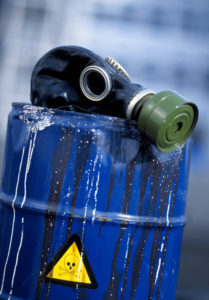 safety is an ongoing challenge that needs to be addressed in earnest.
safety is an ongoing challenge that needs to be addressed in earnest.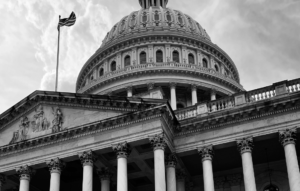 independent testing to ensure accountability and transparency.
independent testing to ensure accountability and transparency.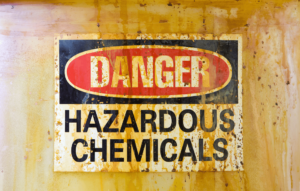 and better oversight are essential to prevent future disasters. This includes revisiting zoning laws and ensuring safe routes for hazardous cargo.
and better oversight are essential to prevent future disasters. This includes revisiting zoning laws and ensuring safe routes for hazardous cargo.




